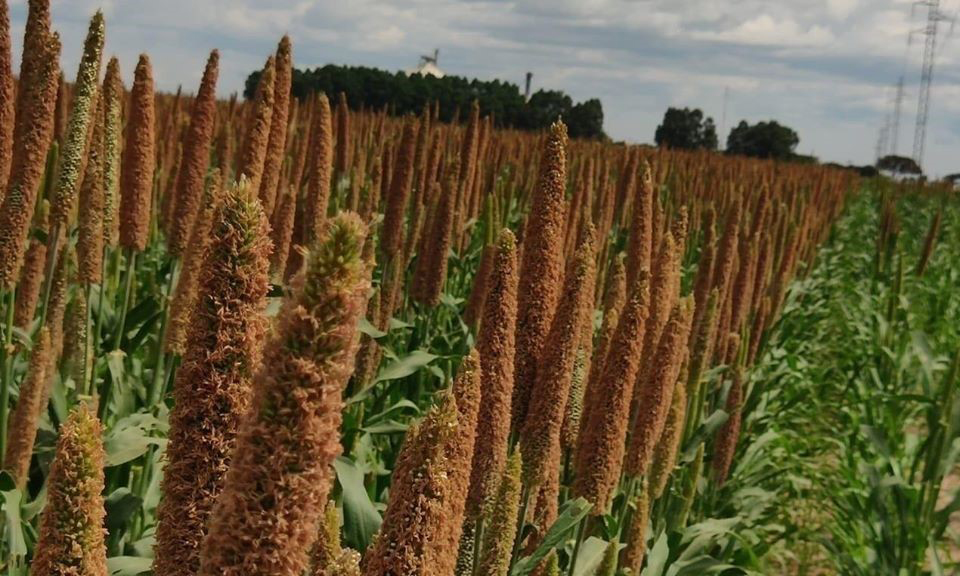By Maria Luiza De Grandi, journalist of Ciência Rural, Santa Maria, RS, Brazil and Edom de Avila Fabricio, Doctoral student, Programa de Pós-graduação em Zootecnia, Universidade Federal de Santa Maria (UFSM), Santa Maria, RS, Brazil
The use of millet (Pennisetum Glaucum), as a more economical alternative to corn and sorghum, is widely used as a feed component for feedlot cattle. Taking into account that the economic aspects of using millet in the cattle diet have been less explored by the scientific community, researchers from the Universidade Federal de Goiás (UFG), Universidade do Estado de Goiás (UEG) and Universidade Federal de Santa Maria (UFSM) have proposed the use of the Monte Carlo simulation technique (economic risk analysis) to assess whether the replacement of maize grains by millet grains interfered with the economic viability of confined cattle. The article “Economic analysis of the risk of replacing maize grains (Zea mays) with millet grains (Pennisetum Glaucum) in the diet of confined cattle” was published in Ciência Rural (vol. 50, no. 3).
For the analysis, the confinement of the cattle was carried out in the Livestock Sector of the Technological Department of Agroindustrial Cooperative of Rural Producers of southwestern Goiás (COMIGO), Rio Verde, state of Goiás, Brazil. Economic viability was assessed using the probabilistic method via Monte Carlo simulation, using 89 non-castrated cattle, with average initial weights between 318 and 321 kg and average initial age of 21 months. The adaptation period was seven days, and the feeding period lasted 89 days, totaling 96 days of confinement. At the end of the research, the results demonstrated a better economic viability when the level of substitution of corn grain for millet grain reached 100%.
According to the researcher Edom Fabricio, the items that most influenced the financial indicator were: price of lean and fat cattle, initial weight, final weight, cost of concentrate, cost of roughage, consumption of concentrate and consumption of roughage (in decreasing order), results similar to those found by Pacheco, et al. (2017). The research results allow investors who choose to substitute corn for millet to have more scientific basis for making the decision, also allowing the methodology described in the research to be adapted to other projects in the same industry.
Addressing the economic feasibility of termination in confinement, focusing on results in relation to the risk of investments by the producer is the innovation of the research in question, in relation to the others. “This study used cost and revenue averages collected over eleven years, capturing a very large variation and providing great reliability to the results”, highlights Edom Fabricio.
Reference
PACHECO, P.S., et al. Stochastic simulation of the economic viability of feedlot finishing steers slaughtered at different weights in southern Brazil. Bioscience Journal [online]. 2017, vol. 33, no. 3, ISSN: 1981-3163 [viewed 12 June 2020]. DOI: 10.14393/BJ-v33n3-34110. Available from: http://www.seer.ufu.br/index.php/biosciencejournal/article/view/34110
To read the article, access it
SILVA, R.M., et al. Economic analysis of the risk of replacing corn grains (Zea mays) with pearl millet grains (Pennisetum glaucum) in the diet of feedlot cattle. Cienc. Rural [online]. 2020, vol. 50, no. 3, e20190443, ISSN: 1678-4596 [viewed 12 June 2020]. DOI: 10.1590/0103-8478cr20190443. Available from: http://ref.scielo.org/9gvbhb
External links
Ciência Rural – CR: <http://www.scielo.br/cr>
Ciência Rural <http://coral.ufsm.br/ccr/cienciarural/>
Como citar este post [ISO 690/2010]:




















Recent Comments